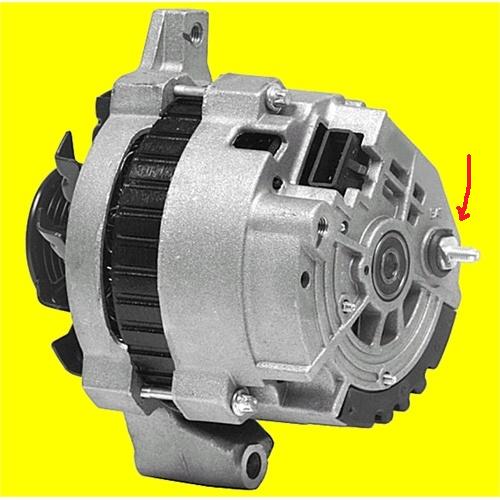I recently helped a guy replace an intake on his 1987 corvette and due to several issues the car sat un, driven for about 3-4 months, now when he starts the car the alternator smokes, which it never did previously and smells like its burning internally,obviously I could replace the alternator,but want to locate the cause of the failure, the alternator was never disconnected , the car runs, but Im very concerned because of the smoking alternator, any ideas are welcome.
yes I can do an alternator test, but regardless of the result a previously functioning alternator just doesn,t normally fail from just sitting so while it may be a coincidence Im looking for potential reasons it failed.
if it was my car ID just install a 200 amp alternator (like Ive done)
http://www.dbelectrical.com/p-9237-alte ... -1986.aspx
as the current alternator he has is original and at least 24 years old., Im not so concerned with correcting the problem as finding the cause... yes it just might be a coincidence that the old alternator picked that time to fail, but I always find that just simply replacing parts without finding out what caused the failure is seldom the best route to take in repairs
keep in mind knowing exactly how things are supposed to be working and researching exactly whats actually occurring in the real world are not necessarily similar pursuits, nor is logic always going to lead you to the correct answer but in most cases, dragging out a shop manual and doing a few logical tests, well, thats the best route to follow.
http://www.sengpielaudio.com/calculator-ohmslaw.htm
http://www.stealth316.com/2-wire-resistance.htm
yes I can do an alternator test, but regardless of the result a previously functioning alternator just doesn,t normally fail from just sitting so while it may be a coincidence Im looking for potential reasons it failed.
if it was my car ID just install a 200 amp alternator (like Ive done)
http://www.dbelectrical.com/p-9237-alte ... -1986.aspx
as the current alternator he has is original and at least 24 years old., Im not so concerned with correcting the problem as finding the cause... yes it just might be a coincidence that the old alternator picked that time to fail, but I always find that just simply replacing parts without finding out what caused the failure is seldom the best route to take in repairs
keep in mind knowing exactly how things are supposed to be working and researching exactly whats actually occurring in the real world are not necessarily similar pursuits, nor is logic always going to lead you to the correct answer but in most cases, dragging out a shop manual and doing a few logical tests, well, thats the best route to follow.
http://www.sengpielaudio.com/calculator-ohmslaw.htm
http://www.stealth316.com/2-wire-resistance.htm

